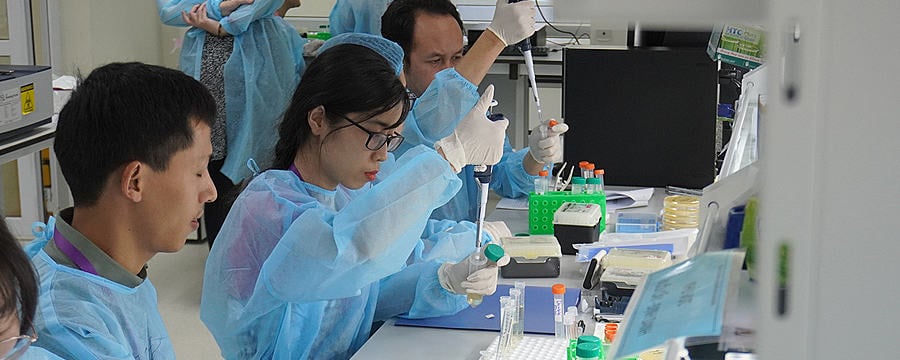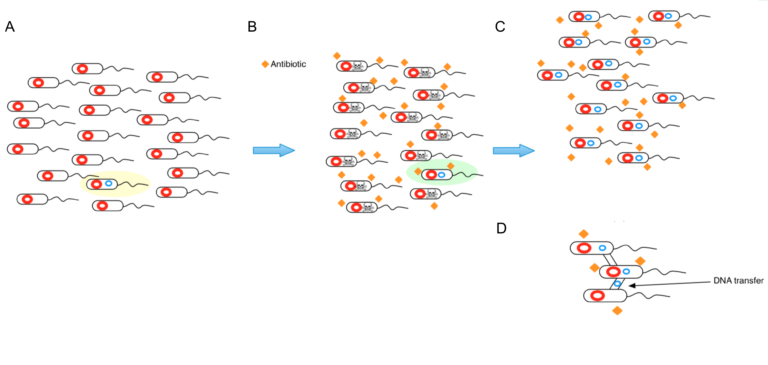This article is from the free online
Bacterial Genomes: Antimicrobial Resistance in Bacterial Pathogens


Reach your personal and professional goals
Unlock access to hundreds of expert online courses and degrees from top universities and educators to gain accredited qualifications and professional CV-building certificates.
Join over 18 million learners to launch, switch or build upon your career, all at your own pace, across a wide range of topic areas.

 Figure 1. A: Population of bacteria, with a highlighted individual carrying a plasmid. B: Antibiotic kills all the sensitive bacteria, indicated by a skull and crossbones. The highlighted individual from A is resistant. C: Population of resistant, plasmid-bearing bacteria unaffected by antibiotic. D: Transfer of plasmid from resistant to sensitive bacteria, which survive in the presence of antibiotic
Figure 1. A: Population of bacteria, with a highlighted individual carrying a plasmid. B: Antibiotic kills all the sensitive bacteria, indicated by a skull and crossbones. The highlighted individual from A is resistant. C: Population of resistant, plasmid-bearing bacteria unaffected by antibiotic. D: Transfer of plasmid from resistant to sensitive bacteria, which survive in the presence of antibiotic






